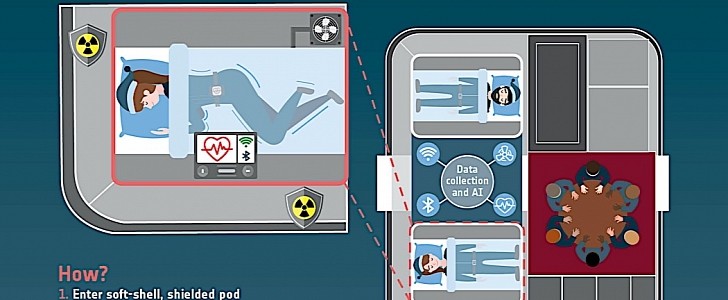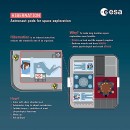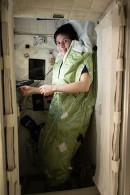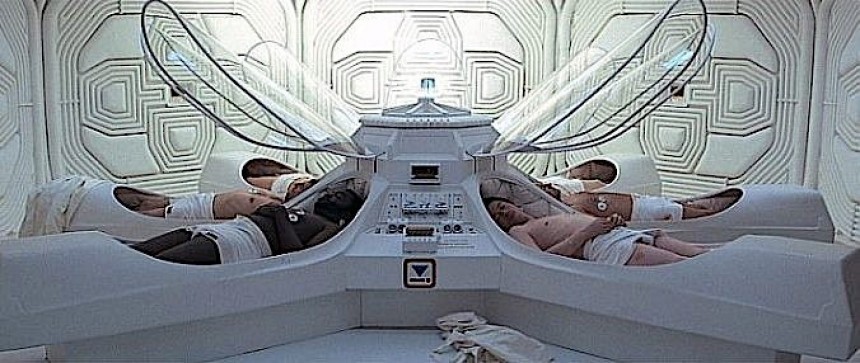If you are at least marginally interested in sci-fi literature and movies, then you probably know that in these works of fiction space travel is possible for humans generally in two ways: either through some shortcut through space (be it warp drives, wormholes, strings, and so on), or through hibernation (through cryogeny or some other means).
Most of the time, because of the more dynamic and spectacular nature of such constructs, authors go for the former. But we’ve witnessed quite the number of writings based on cryogeny as well, with the first examples that comes to mind being Alien or Passengers.
With warp drives and navigation through wormholes well out of our technological reach, we’re really left with only one option for space exploration in the foreseeable future. And that would be hibernation. Meaning, in essence, the suspension of most bodily activities (including eating), and the conservation of energy through sleep.
With the coming crewed missions to Mars more or less around the corner, hibernation is seriously taken into account by the space agencies involved.
You see, a trip to Mars takes about seven months, in the best of cases. Say you send out there a crew of three: Earth will have to devise a ship capable of holding not only them, but also seven-months-worth of food and water, but also hardware for entertainment, physical activities, hygiene, and so on. And that’s just for the journey out, so double all that for the return trip, add some reserves, and you’ve got the need to fit in there about two years-worth of supplies.
According to the Jennifer Ngo-Anh, European Space Agency (ESA) research and payload coordinator of Human and Robotic Exploration, that translates into about 30 kg (66 pounds) of supplies per astronaut per day. Do the math for a three-person crew for two years, and you’re left with a very bulky and heavy ship, and that in turns needs much more expensive fuel to burn.
Hibernation could eliminate all of that in one swift sweep. Or torpor, as the space agency calls it, which is a state of mental and physical lethargy that also comes with a reduced metabolism rate.
A study conducted by ESA and published in December 2021 in Science Direct claims that a reduction to 25 percent of the normal state of activity for a human body would significantly impact the numbers we talked about in the paragraphs above.
For that reduction to be achieved, ESA came up with a soft shell hibernation pod design, or, at least, the required specifications for one. The low light, low noise apparatus should operate at a temperature of less than 10 degrees Celsius (50 degrees Fahrenheit), so not exactly those deep freeze capsule you get in sci-fi movies.
Another different aspect compared to movies is that astronauts would not be restrained, and they’d be dressed in clothing that helps prevent overheating. Their bodies would be connected to sensors to read their life signs.
To shield the occupants from radiation, each pod would be located in the middle of a series of water containers – it’s unclear at this point how so much water would not void the advantages of hibernation when it comes to cutting down the quantity of stuff being transported.
As for who will be running the ship while the crew sleeps, the answer is artificial intelligence, of course, and that should come as no surprise, as we’re pretty advanced in this field already.
At the time of writing, just like works of fiction, astronaut hibernation pods are not a real thing. The ESA pod idea and the study that accompanies it are however, to our knowledge, the first time an established space organization is seriously talking about this.
And this could have far-reaching implication for the future of space exploration.
With warp drives and navigation through wormholes well out of our technological reach, we’re really left with only one option for space exploration in the foreseeable future. And that would be hibernation. Meaning, in essence, the suspension of most bodily activities (including eating), and the conservation of energy through sleep.
With the coming crewed missions to Mars more or less around the corner, hibernation is seriously taken into account by the space agencies involved.
You see, a trip to Mars takes about seven months, in the best of cases. Say you send out there a crew of three: Earth will have to devise a ship capable of holding not only them, but also seven-months-worth of food and water, but also hardware for entertainment, physical activities, hygiene, and so on. And that’s just for the journey out, so double all that for the return trip, add some reserves, and you’ve got the need to fit in there about two years-worth of supplies.
Hibernation could eliminate all of that in one swift sweep. Or torpor, as the space agency calls it, which is a state of mental and physical lethargy that also comes with a reduced metabolism rate.
A study conducted by ESA and published in December 2021 in Science Direct claims that a reduction to 25 percent of the normal state of activity for a human body would significantly impact the numbers we talked about in the paragraphs above.
For that reduction to be achieved, ESA came up with a soft shell hibernation pod design, or, at least, the required specifications for one. The low light, low noise apparatus should operate at a temperature of less than 10 degrees Celsius (50 degrees Fahrenheit), so not exactly those deep freeze capsule you get in sci-fi movies.
To shield the occupants from radiation, each pod would be located in the middle of a series of water containers – it’s unclear at this point how so much water would not void the advantages of hibernation when it comes to cutting down the quantity of stuff being transported.
As for who will be running the ship while the crew sleeps, the answer is artificial intelligence, of course, and that should come as no surprise, as we’re pretty advanced in this field already.
At the time of writing, just like works of fiction, astronaut hibernation pods are not a real thing. The ESA pod idea and the study that accompanies it are however, to our knowledge, the first time an established space organization is seriously talking about this.
And this could have far-reaching implication for the future of space exploration.









